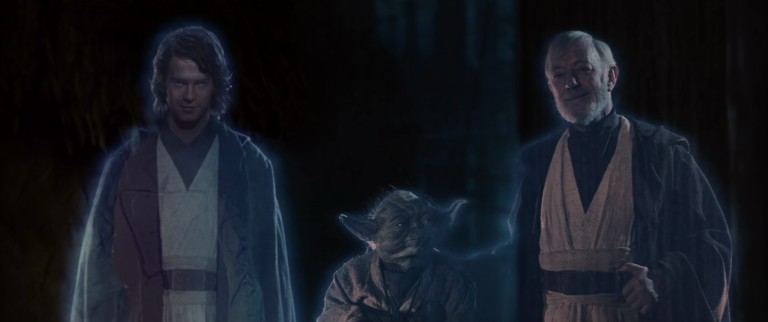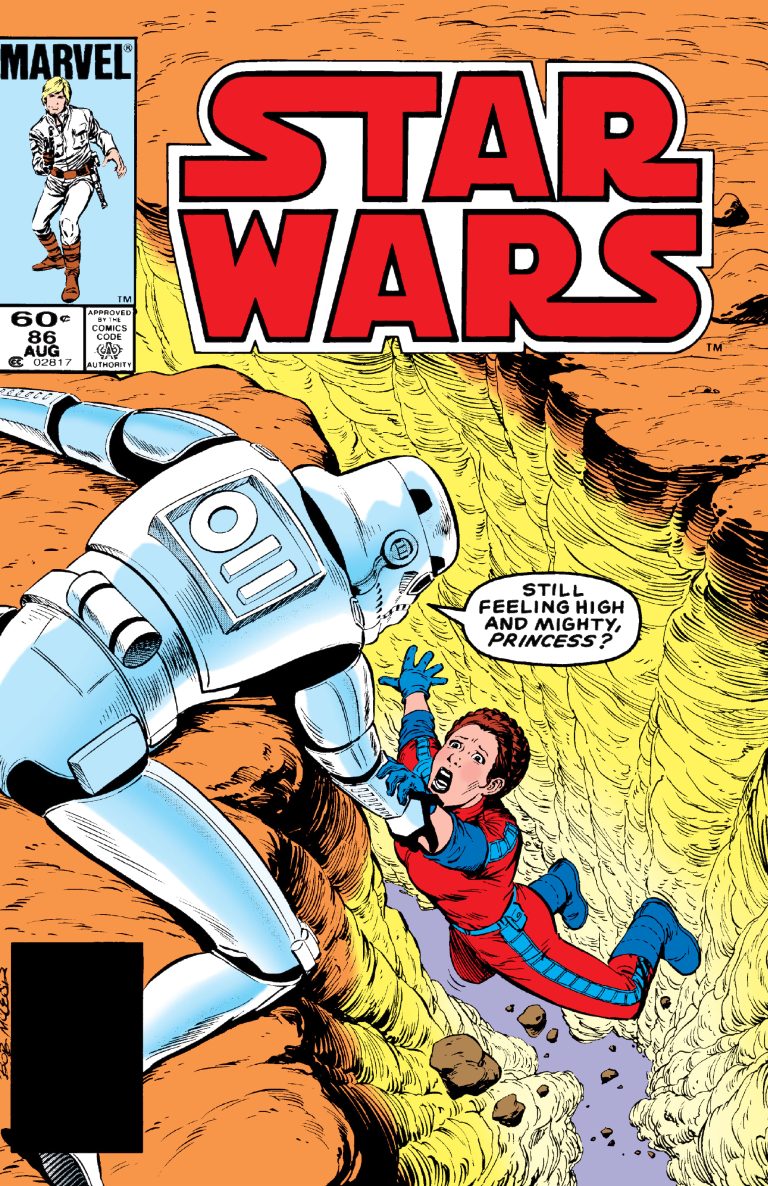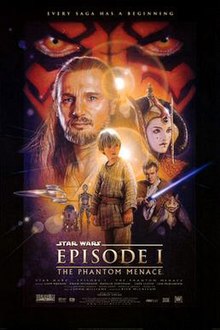How To Watch The Star Wars Series In Order?
Ah, the Star Wars series. A saga that has captured the hearts of millions across the galaxy. But with so many movies, spin-offs, and TV shows, it can be a bit overwhelming to figure out the correct order to watch them in. Fear not, dear reader, for I am here to guide you on your journey through the Star Wars universe. So, grab your lightsaber and let’s dive in!
In order to fully immerse yourself in the epic tale of Star Wars, it’s important to watch the series in the right order. Now, you may be wondering, “How do I navigate this vast galaxy of movies and shows?” Well, fear not, my Padawan, for I have the answers you seek. The best way to experience the Star Wars series is to watch it in chronological order. Start with Episode I: The Phantom Menace and work your way through the prequels, originals, and sequels. This will allow you to follow the story as it unfolds, from the rise of Anakin Skywalker to the battle against the First Order. So, grab some popcorn, dim the lights, and prepare to be transported to a galaxy far, far away.
But wait, there’s more! If you’re a true Star Wars aficionado, you may also want to explore the various spin-offs and TV shows that expand upon the main storyline. From “Rogue One: A Star Wars Story” to “The Mandalorian,” there are countless adventures waiting to be discovered. While these can be enjoyed at any point in your Star Wars journey, watching them in release order can provide a deeper appreciation for the universe and its characters. So, whether you’re a Jedi Knight or a Sith Lord, get ready for an epic cinematic experience like no other. May the Force be with you as you embark on your Star Wars marathon!
- Start with Episode IV: A New Hope (1977).
- Follow with Episode V: The Empire Strikes Back (1980).
- Continue with Episode VI: Return of the Jedi (1983).
- Next, watch Episode I: The Phantom Menace (1999).
- Proceed with Episode II: Attack of the Clones (2002).
- Watch Episode III: Revenge of the Sith (2005).
- Move on to Episode VII: The Force Awakens (2015).
- Watch Episode VIII: The Last Jedi (2017).
- Finally, conclude with Episode IX: The Rise of Skywalker (2019).

How to Watch the Star Wars Series in Order: A Complete Guide
The Star Wars series is one of the most beloved and iconic franchises in cinematic history. With multiple trilogies, spin-offs, and television shows, it can be overwhelming for newcomers to figure out where to start and how to watch the series in chronological order. In this comprehensive guide, we will break down the different viewing options and provide a step-by-step approach to experiencing the Star Wars saga in the correct order.
The Release Order: A Classic Approach
The release order is the most traditional way of watching the Star Wars series. It follows the order in which the movies were originally released, allowing viewers to experience the franchise as it unfolded in theaters. This approach can be a great way to appreciate the evolution of the series and the impact it had on popular culture.
1. Star Wars: Episode IV – A New Hope (1977): Start with the movie that started it all. A New Hope introduces audiences to the galaxy far, far away and sets the stage for the epic battle between the Rebel Alliance and the evil Galactic Empire.
2. Star Wars: Episode V – The Empire Strikes Back (1980): Next, dive into the second installment of the original trilogy. The Empire Strikes Back continues the story, revealing shocking revelations and deepening the conflict.
3. Star Wars: Episode VI – Return of the Jedi (1983): Conclude the original trilogy with Return of the Jedi, as the Rebel Alliance launches a final assault on the Empire and Luke Skywalker confronts his father, Darth Vader.
4. Star Wars: Episode I – The Phantom Menace (1999): The prequel trilogy begins with The Phantom Menace, exploring the origins of Anakin Skywalker and the rise of the Sith.
5. Star Wars: Episode II – Attack of the Clones (2002): Continue the prequel trilogy with Attack of the Clones, as the galaxy edges closer to all-out war and Anakin’s journey towards the dark side accelerates.
6. Star Wars: Episode III – Revenge of the Sith (2005): Conclude the prequel trilogy with Revenge of the Sith, witnessing Anakin’s transformation into Darth Vader and the fall of the Jedi Order.
7. Star Wars: Episode VII – The Force Awakens (2015): Jump forward in time to the sequel trilogy with The Force Awakens, introducing a new generation of heroes and villains.
8. Star Wars: Episode VIII – The Last Jedi (2017): Continue the sequel trilogy with The Last Jedi, as the Resistance faces the might of the First Order and the legacy of the Jedi is tested.
9. Star Wars: Episode IX – The Rise of Skywalker (2019): Conclude the Skywalker saga with The Rise of Skywalker, bringing the epic story to a thrilling and emotional end.
This release order approach allows viewers to experience the Star Wars series in the same way audiences did when the films were first released. It captures the excitement and surprises of each new installment, while also providing a sense of nostalgia.
The Machete Order: A Unique Perspective
In addition to the release order, another popular viewing method is the “Machete Order.” This approach offers a unique perspective on the series and aims to enhance the storytelling by rearranging the movies.
1. Star Wars: Episode IV – A New Hope (1977)
2. Star Wars: Episode V – The Empire Strikes Back (1980)
3. Star Wars: Episode II – Attack of the Clones (2002)
4. Star Wars: Episode III – Revenge of the Sith (2005)
5. Star Wars: Episode VI – Return of the Jedi (1983)
6. Star Wars: Episode VII – The Force Awakens (2015)
7. Star Wars: Episode VIII – The Last Jedi (2017)
8. Star Wars: Episode IX – The Rise of Skywalker (2019)
The Machete Order skips Episode I – The Phantom Menace, arguing that it adds little to the overall story and can be omitted without affecting the narrative. By placing Attack of the Clones and Revenge of the Sith between The Empire Strikes Back and Return of the Jedi, this order introduces the backstory of Anakin Skywalker as a series of flashbacks, revealing his fall to the dark side as a shocking twist.
Ultimately, the choice between the release order and the Machete Order depends on personal preference. Both approaches offer unique viewing experiences and can enhance one’s appreciation of the Star Wars saga.
Additional Viewing Options: Spin-offs and Television Shows
In addition to the main saga, the Star Wars universe has expanded with spin-off films and television shows. These can be enjoyed alongside the main series or as standalone experiences, providing further depth and exploration of the galaxy far, far away.
Rogue One: A Star Wars Story (2016): This standalone film takes place just before the events of A New Hope and follows a group of Rebel spies on a mission to steal the plans for the Death Star. It offers a unique perspective on the events leading up to the original trilogy.
Solo: A Star Wars Story (2018): Another standalone film, Solo explores the early adventures of the iconic smuggler Han Solo and his loyal companion Chewbacca. It delves into the character’s backstory and provides insight into his relationships and motivations.
In addition to the films, there are several television shows set in the Star Wars universe:
Star Wars: The Clone Wars (2008-2020): This animated series takes place between Attack of the Clones and Revenge of the Sith, exploring the events of the Clone Wars and the epic battles that shaped the galaxy.
Star Wars Rebels (2014-2018): Set between Revenge of the Sith and A New Hope, Rebels follows a group of rebels as they fight against the Empire and play a crucial role in the formation of the Rebel Alliance.
The Mandalorian (2019-present): This highly acclaimed series takes place after the events of Return of the Jedi and follows the adventures of a lone bounty hunter in the outer reaches of the galaxy. It offers a fresh perspective on the Star Wars universe and introduces compelling new characters.
These additional viewing options can be enjoyed at any point during or after watching the main series, providing a deeper understanding of the Star Wars universe and its rich mythology.
Conclusion
Whether you choose to watch the Star Wars series in release order or the Machete Order, the most important thing is to enjoy the journey and immerse yourself in the epic storytelling and timeless characters. The Star Wars series has captivated audiences for decades and continues to inspire new generations of fans. May the Force be with you as you embark on your Star Wars viewing adventure!
Key Takeaways: How to Watch the Star Wars Series in Order?
- Start with “Episode IV: A New Hope” as it is the first movie released and sets the foundation for the series.
- Follow with “Episode V: The Empire Strikes Back” to continue the story and see the iconic “I am your father” scene.
- Next, watch “Episode VI: Return of the Jedi” to see the final battle between the Rebel Alliance and the Galactic Empire.
- After the original trilogy, move on to the prequel trilogy starting with “Episode I: The Phantom Menace.”
- Finish off with the sequel trilogy, starting with “Episode VII: The Force Awakens” and concluding with “Episode IX: The Rise of Skywalker.”
Frequently Asked Questions
1. What is the chronological order to watch the Star Wars series?
When it comes to watching the Star Wars series in chronological order, there are a few different ways you can approach it. One option is to watch the movies in the order they were released. This means starting with “Star Wars: Episode IV – A New Hope” (1977) and following the original trilogy, then moving on to the prequel trilogy, and finally the sequel trilogy. Another option is to watch the movies in chronological order within the Star Wars universe, starting with “Star Wars: Episode I – The Phantom Menace” (1999) and progressing through the story in linear fashion.
Both approaches have their merits, but if you’re new to the series, watching in release order may be the most enjoyable and traditional way to experience the saga.
2. Should I watch the Star Wars movies in release order or chronological order?
Whether you should watch the Star Wars movies in release order or chronological order depends on your personal preference. Watching in release order allows you to experience the series as it was originally intended, following the story as it unfolded for audiences. This can be a nostalgic and exciting way to watch the films, especially if you’re new to the franchise.
On the other hand, watching in chronological order provides a different perspective and allows you to follow the story in a linear fashion. This can help you better understand the connections between characters and events. Ultimately, the choice is yours and both approaches have their own merits.
3. What is the best way to watch the Star Wars series for a first-time viewer?
For a first-time viewer, the best way to watch the Star Wars series is arguably in release order. This means starting with “Star Wars: Episode IV – A New Hope” and following the original trilogy, then moving on to the prequel trilogy, and finally the sequel trilogy. By watching in release order, you’ll experience the story as it was originally presented to audiences, and you’ll also get to see the evolution of the franchise over time.
Watching in release order also allows you to enjoy the surprises and plot twists in the intended order, which can enhance your overall viewing experience. However, if you prefer a chronological approach, starting with “The Phantom Menace” and progressing through the story in order, that can also be a valid and enjoyable option.
4. Are there any standalone Star Wars movies that should be watched separately?
Yes, there are standalone Star Wars movies that can be watched separately from the main saga. These standalone films, known as the “Star Wars Anthology” series or “Star Wars Stories,” explore different characters and storylines within the Star Wars universe. One example is “Rogue One: A Star Wars Story” (2016), which takes place before the events of the original trilogy and follows a group of rebels who steal the plans for the Death Star.
Other standalone films include “Solo: A Star Wars Story” (2018), which delves into the backstory of Han Solo, and the upcoming “Obi-Wan Kenobi” series, which will focus on the iconic Jedi knight. While these movies can be enjoyed on their own, they also add depth and context to the overall Star Wars saga.
5. Should I watch the Star Wars animated series along with the movies?
If you’re a die-hard Star Wars fan or simply want to delve deeper into the universe, watching the Star Wars animated series can be a great complement to the movies. The animated series, such as “Star Wars: The Clone Wars” and “Star Wars Rebels,” expand on the stories and characters introduced in the films.
While the animated series are not essential for understanding the main saga, they provide additional context and character development that can enhance your overall Star Wars experience. Plus, they offer unique and engaging storytelling that fans of all ages can enjoy. So, if you have the time and interest, consider adding the animated series to your Star Wars watchlist.
ALL STAR WARS CANON MOVIES, SHOWS, & VIDEO GAMES in Chronological Order! BEST Star Wars Watch Order!
Final Summary: How to Watch the Star Wars Series in Order?
So there you have it, my fellow Star Wars enthusiasts! We’ve embarked on an epic journey through the Star Wars series and explored the different viewing orders available. From the release order to the chronological order and even the machete order, we’ve uncovered the pros and cons of each approach. Whether you’re a seasoned fan or a newcomer to the galaxy far, far away, choosing the right viewing order can enhance your Star Wars experience.
Remember, it’s not just about the order in which you watch the movies, but also about the stories and characters that captivate us. Each film has its own unique charm and contributions to the Star Wars saga. So, take your lightsaber in hand, gather some friends, and immerse yourself in the timeless adventure that has captured the hearts of millions.
As you embark on your Star Wars marathon, don’t forget to embrace the Force and let it guide you through the epic battles, emotional moments, and unforgettable characters. May the Force be with you as you watch the Star Wars series in your chosen order and discover the magic that has made this franchise an enduring part of popular culture. Enjoy the journey, and may your love for Star Wars continue to grow as you explore the vast universe that George Lucas created. May the Force be with you, always!




